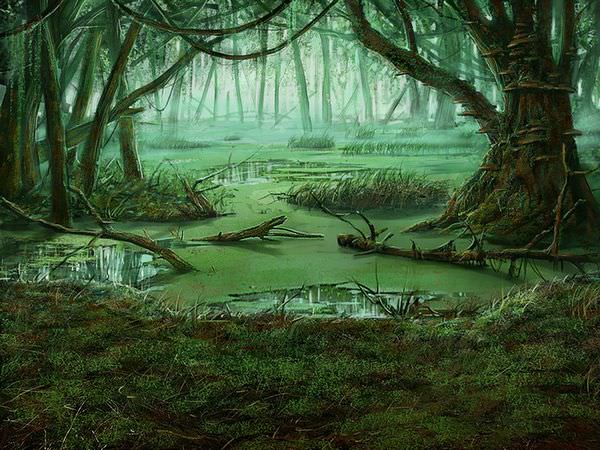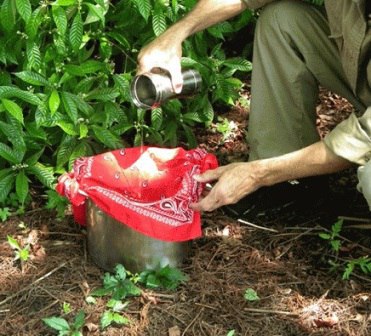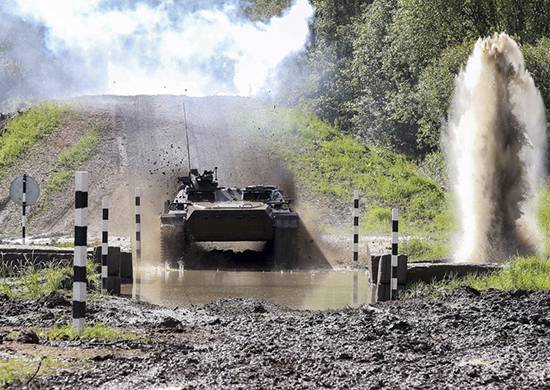
a photo: google
By marshland are areas of the earth surface, almost entirely or in large part engaged in excessively wet soils. Permanent or temporary waterlogging is more common on the plains and in the valleys, sometimes on watersheds and less on the slopes of the irregularities.
If on the way to meet the swamp, to move through it must be carefully prepared:
Fasten clothing and tuck pants into boots. This is done, pants to not interfere with walking and does not cling to the various obstacles.
review, that of the goods may be spoiled by dampness (clothes, products, equipment, weapon). Such items are best folded in plastic bags and placed in the middle of the pack.
Perform a visual reconnaissance for detours Marsh, location sound bumps and dry islands, and so on. etc..
Prepare strong staves, possibly, earth.
Marshland divided into marshes and wetlands. A characteristic feature of marshland are sparsely populated, adverse road conditions, abundance impassable, and sometimes impassable areas. All this reduces the mobility of the troops, It creates additional difficulties in the selection of equipment and products, in organizing the transport of food and ammunition, evacuation.
According to its structure all types of wetlands are divided into:
– solid peat bogs, whose solid peat cushion rests on a more or less solid ground. With such dense peat bogs compared to most other passable;
– marsh swamp (Quagmirran, splavynnыe swamp), whose fragile, staggering under the feet of peat cover rests on the semi, based jelly, Ile, and sometimes it floats on water (splavynnoe swamp). Marsh swamp most impassable, and often impassable, especially splavinah. The hallmark of marsh wetlands is a lack of woody vegetation; occurring on them bushes and some trees are usually no more than the height of 2 m.
Marshes are rarely equally passable along its entire length and at different times of the year. Many of them, impassable in summer, winter freeze and made legkoprohodimymi, legkoprohodimye and in the dry season are difficult to access during periods of spring and autumn slush.
The surface of some wetlands can be deceiving: often muddy water or shallow surface layer and resting on solid ground, and, conversely, seemingly solid surface easily breaks under the weight of a person. Small green areas on treeless swamp, seemingly solid islands, They are usually signs of a particularly viscous and marshy places.
Move the swamp should be with extreme caution and always with a long lasting sixth. During the movement necessary to probe the sixth or one foot to a bottom of the swamps and bogs the presence of craters.
dips, You can not wallow, selected should be slowly, leaning on the pole lying across the, without making any sudden movements, trying to give the body a horizontal position; try to get your hands branches of bushes or other vegetation and, pulling, crawl away from a dangerous place. Remove the legs from the quagmire in turn must be choppy, breast lying on a stick. If the failed immune rope, the, that it does not cut through the quagmire, It is enclosed by timber, vyazanki looking hvorosta.
If all sides impenetrable surface, and go back dangerously, you need to cut the branches and thin trees, throw them at each other crosswise. So, So slow, but guaranteed to be possible to pass any swamp. If in such a place will have to go more than once, You can namostit causeway. For this fell trees across the road at a distance of two feet from one another. You can knit a mat of reeds, herbs, straw, but they are less durable
Moving through thickets of grass with sharp leaves, you need to stock up on a stick, that this herb will wrinkle. It suffices to hold pole straight ahead in the horizontal plane, while protecting your hands with a cloth or gloves to bend down and grass from herself to the ground. If the thickets very thick, It uses a method backward movement, wherein the back and arms operate protection function. In this case, you must constantly monitor the direction of movement.
On the frozen marsh pass easily. The danger is that, that sometimes only the surface layer freezes. Fast and good freeze grass marsh. Poor frozen marsh, covered with shoots of willow and alder. swamps freeze outskirts worse. Hummocky swamps freeze unevenly. Mossy swamps are frozen slowly, than herbal; ice on them easily falls.
for difficult bog group movement must carry chain at intervals of 2-3 meters, then in the post (if the path is not according to the swamp). Leg should be put gently, without jerks and abrupt movements. Way safer prodelyvat over bumps, about shrubs and tree trunks. You should not jump from hummock to hummock.
To overcome the vast waterlogged spaces made bolotostupy or branch lapnika (cane). They are made from a springy green hazel branches, alder, rowan, bird cherry, birch or willow thickness of 2-2.5 cm and a length 150 cm. For ease of operation it is desirable to pre-steam the threads over boiling water. The ends securely bound in a loop width 20-25 cm and 40-50 cm in length, which are attached to the crossbars, and very sturdy wooden loop braided twine or vein. The middle part bolotostupov amplified and attached to the leg with a cord.
slough (overgrown with bright green grass pond) almost impassable, Its distinctive feature is the haze of the surface layer. Before setting foot on land quagmire, We need to chart a path of movement. It should move on with the interval of 5-6 m. You should not go in the tracks. Well with marsh grass is better to pass on the poles.
When you move through the swamp to constantly monitor the direction of movement, celebrate landmarks. Marking the way can be useful when returning back, in case of impossibility of further progress. This marking must be carried out discreetly, so as not to identify himself to the enemy.
Accommodations in bog selected highest and dry. Improvised (dry grass, branches, lapnikom, backpack) litter is. With long-term movement of the swamps must be periodically dry in the sun or near a fire feet for 30-60 minutes, to prevent cracking of the skin.












buzz